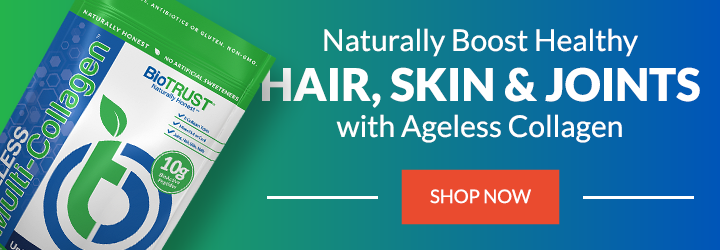How to Gain Lean Muscle (in 6 Simple Steps)

Sometimes it seems like most people interested in getting fit are interested in one thing and one thing only: fat loss. They want to lose weight, fit into their “skinny” clothes, and be a smaller human. Yet, getting fit—and looking fit—is as much about how to gain lean muscle as it is about how to lose fat.
Why Building Lean Muscle is Crucial
There are so many reasons why it’s vital to gain lean muscle. For example, when you gain lean muscle, it can help you:
- Lose fat
- Improve your body composition (lower body fat percentage)
- Burn more calories and boost metabolism (though the difference isn’t as great as many believe)
- Look leaner, even at the same weight
- Support healthy appetite management
- Promote insulin sensitivity
- Improve balance
- Stand up straighter and enjoy improved posture
- Increase coordination
- Prevent injury
- Boost bone health
- Ease pain
- Prevent weight regain (and help you lose weight to begin with)
- Slow muscle and strength loss as you age
- Promote healthy aging
- Prevent falls and accidents
- Boost confidence
Building muscle by way of strength training is truly the fountain of youth. You see, as we get older, we start to lose muscle due to inactivity. Yet, resistance training not only builds muscle strength, it builds bone strength.
But won’t it change the way I look? Yes, it absolutely can, but not in the way many people are worried about. Gaining lean mass won’t make you look big and bulky (unless you seriously eat and train to gain size and bulk with a specialized program—“getting big” is actually very difficult, even for men).
Rather, when you learn how to gain lean muscle, you can look leaner, more toned, and smaller. Muscle is actually denser than fat, so while a pound is a pound (whether it’s fat or muscle), a pound of muscle takes up much less space than a pound of fat.
How to Gain Lean Muscle Easily
Step 1: Choose Your Exercise
You don’t need to go to the gym and lift big, intimidating weights to see results either. (Unless that’s what you’re into—and if so, go for it. It can be so satisfying to reach a personal best on the bench, squat, or deadlift, for example!)
In fact, you can gain lean mass with just one piece of amazing equipment: your body. You can, of course, add any equipment you like. But you can also build lean mass with:
- Bodyweight exercises
- High-intensity interval training like a Tabata workout
- Weightlifting with dumbbells, kettlebells, barbells
- Resistance training on gym machines
- Resistance bands
- Or even power yoga
Step 2: Push Your Muscles to Adapt and Grow Stronger (aka Progressive Overload)
Whether you’re lifting heavy or lighter weights, the key is to push your muscles until they demand a break (i.e., they are fatigued). Then, continue to challenge your body as you get stronger by doing a more difficult variation of the exercise (e.g., doing pushups on your toes rather than your knees), adding more weight (e.g., adding ten pounds to your bench), or doing more repetitions (e.g., if you were able to do 10 lunges in your last workout, see if you can hit 12 this time).
Gaining lean mass isn’t necessarily about doing a certain number of sets and reps (e.g., 10 repetitions with 3 sets [i.e., rounds] of bench press.) You can also challenge your muscles by slowing down the exercise. For example, raise the dumbbells for a count of one but take three counts to lower them. Or, hold the position of the Warrior II yoga pose for five breaths for an isometric hold rather than doing reverse lunges.
What’s important to the muscle is what’s called the “time under tension,” as this leads to greater muscle protein synthesis (i.e., muscle growth). 1 It’s also worth noting that if you want to gain lean mass, rep ranges of 6 to 12 for 4 to 5 sets appear to best, shooting for muscular failure. 2 But the body also adapts to what it isn’t used to, so change up your workouts regularly rather than doing the same workout (exercise, sets, and reps) over and over again.
And any type of muscle contraction can produce improvements in strength and power. That includes regular, or isotonic, muscle contractions (like squats, pushups, and triceps dips) and isokinetic exercise, which maintain a fixed speed of movement and are more often used for injury rehabilitation and prevention or to control muscle development. These are both recommended to gain lean muscle.
It also includes isometric exercises, which involve just a static contraction (without any visible movement) like wall sits, glute bridges, and planks, as well as strong yoga poses like warrior, boat, and chair pose. This type of exercise is especially recommended to improve functional performance for daily activities as well as sports. 3
Step 3: Choose Primarily Compound Movements
Let’s face it… most of us are pressed for time and targeting all of the little muscles in the body with isolation exercises is time consuming, and to be blunt, completely unnecessary for most people. Make your workouts most efficient by choosing compound exercises instead of single-joint (i.e., isolation) exercises.
Compound exercises are movements that involve multiple joints, and that means you use a larger number of muscles at once. Common compound exercises include squats (which involve quads, hips, glutes, and calves), deadlifts (forearms, lats, hips, glutes, back, and hamstrings), bench press (chest, shoulders, and triceps), and shoulder press (core, shoulders, chest, and triceps). So, your workouts will be most efficient as well as effective.
Once you have those exercises as the main part of your workout, you can finish off the workout with isolation exercises for the muscles you really want to focus on, including those for building sexy arms!
Don’t forget that you can tailor most exercises to your fitness level and physical ability. Or, you can choose other movements that your body can better handle. (For example, I dislocated my shoulder earlier this year, so I’ve had to modify many of my usual upper-body exercises as my shoulder heals and regains strength. Before the injury, I was easily able to do full pushups. After the injury, I could only do a few wall pushups. Now I’m back on the floor, but I leave my knees on the ground as I progress back up to full pushups.)
In other words, if something hurts, then back off and try something different. And there are some movements to just avoid altogether to prevent injury.
Step 4: Do Some Cardio (but not too much)
If your goal is to gain lean mass, you may think cardio isn’t necessary. Yet, cardio is important for keeping your heart and lungs in tip-top shape. And, interestingly, the right amount of cardio can actually help you gain lean mass.
One study found that guys who added two endurance training sessions for no more than 45 minutes to their routines each week were rewarded with an increase in explosive strength over those who just lifted or did cardio alone. 4
Yet, spending too much time improving your endurance with cardio activities can also hinder your ability to gain lean mass. So, try to stick with just two endurance training sessions per week. If you want to hit the pavement more than that, maybe shoot for a walk rather than a run. Or, get the best of both worlds by doing a kettlebell circuit or a HIIT routine for 20 minutes to build muscle and burn calories at the same time.
Step 5: Feed Your Muscles
When it comes to how to gain lean muscle, it’s not just about what you do in the gym. It’s also about what you feed your muscles to recover and grow. Protein synthesis is another word for muscle building, and it requires protein, or more specifically, the amino acids that make up protein. Your workouts break down the muscles, and your body uses protein to help them rebuild stronger.
Good protein sources include:
- Eggs
- Fatty fish, like salmon and sardines
- Poultry (chicken and turkey)
- Greek yogurt
- Cottage cheese
- Tuna
- Lean beef and bison
- Seafood, like shrimp and scallops
- Cottage cheese
- Beans and legumes
- Protein powders, like BioTRUST Low Carb
- Peanuts and peanut butter
- Pumpkin seeds
- Hemp seeds
- Chia seeds
- Tofu
- Pork
- Milk
- Ancient grains, like quinoa, kamut, and amaranth
- Green peas
- Spirulina
You also, however, need to fuel your entire body, so don’t neglect adding the right mix of carbs and fats from healthy whole foods. Here’s a “handy” way to create balanced meals to both gain lean muscle and drop body fat.
Step 6: Get Plenty of Shut-Eye
Again, training actually breaks down muscles, so it’s when you rest that your muscles recover and grow. When it comes to losing fat, gaining lean mass, and building a leaner, stronger body, sleep is one of the most important priorities.
Research has found, in fact, that skipping sleep decreases protein synthesis, which prevents muscles from repairing and growing and can even lead to a loss in muscle. 5
In addition to prioritizing a sleep schedule (to ensure you’re getting seven to nine hours each night), you may also want to enjoy some slow-digesting protein shortly before bed to help your muscles rebuild as you sleep. Good choices include cottage cheese or a protein shake, for example.
How to Gain Lean Muscle: a Wrap-up
Now that you know how to gain lean muscle, how fast can you expect results? If you’re a newbie (especially if you’re a teenager), you can gain lean muscle faster than someone who’s been training for years. In that case, you could gain 15 to 20 pounds in your first year. (Eat more protein and maybe supplement with essential amino acids and creatine, and you may even gain more.)
But honestly, even under optimal conditions, most experts will tell you that gaining one to two pounds per month is a more realistic expectation, especially if you’ve ever trained before and are no longer a skinny teenager. (Now you know why the worries of getting big and bulky can seriously be put to rest—unless you train specifically for it, have superior genetics, eat enough to add lots of weight, and devote your life to gaining muscle for months and years.)
Yet even modest gains in lean mass can change how your body looks, feels, and functions. You can look leaner and more toned, better maneuver through your daily activities, and age more gracefully. Who wouldn’t want that?





 7 Signs Your Body is Seriously Low on Collagen (not just wrinkles)
7 Signs Your Body is Seriously Low on Collagen (not just wrinkles) Health Expert: "Turmeric Doesn't Work (unless...)"
Health Expert: "Turmeric Doesn't Work (unless...)" 3 Warning Signs Your Probiotic Supplement is a Total Waste
3 Warning Signs Your Probiotic Supplement is a Total Waste

